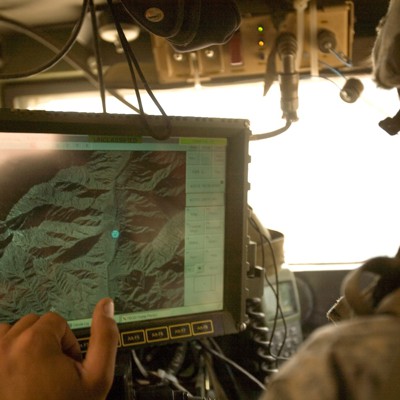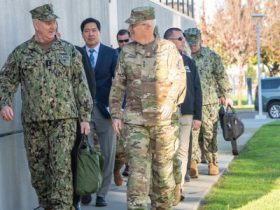The Pentagon’s biggest quantum challenge isn’t just the tech itself—it’s making the technology relevant and relatable to commanders and troops. But a push to develop and deploy quantum sensors for navigation as a more accurate, less vulnerable alternative to GPS could change things.
“In order to really succeed, we have to build the whole story around not just the quantum and supply chain and the workforce going backwards, but all the way to the end use,”
John Burke, who leads the Pentagon’s quantum science initiatives for the Office of the Undersecretary of Defense for Research and Engineering for Science and Technology, said at the Quantum World Congress in McLean, Virginia, on Tuesday.
The Pentagon has seven priorities for quantum research: protecting computing technology from adversaries; developing atomic clocks that don’t rely on GPS; magnetic navigation to guide long-range missiles without GPS; inertial sensors for GPS-free navigation and remote sensors for ultra-secure communications; computing applications; and new quantum sensors.
“The sensors are, relatively speaking, easy to develop into a prototype in a lab,” Burke said. “But it’s much, much harder to field those into practice.”
With help from Congress, the Defense Department has been steadily increasing its spending in quantum in recent years, and industry has started to follow suit.
On Tuesday, Boeing announced plans to demonstrate space-based quantum networking—for ultra-secure communications that could link and process data captured by quantum sensors—by 2026. Moreover, the Pentagon’s Defense Innovation Unit is readying an atomic gyroscope, a device that measures rotations on a particle level, which could improve navigation and is tough enough to operate in space.
“That’s going to be a big deal,” Burke said of the DIU effort, adding that it may be one of the first quantum technologies other than clocks to go to space. The agency is also working on a $55 million effort with the Pentagon and military services to transition to quantum sensors from conventional sensors, Burke said.
The multimillion-dollar transition initiative is meant to be “a very big step forward for sending a demand signal for quantum sensors, in particular, trying to get those into operational use,” Burke said.
The military has been looking for alternatives to GPS as the technology’s vulnerabilities in battle, like spoofing, become increasingly clear. Quantum sensors could help protect against that, said Michael Hush, chief scientific officer at the quantum software company Q-CTRL.
“We want to create an alternative solution that you can rely on, and sometimes even determine if your GPS signal has been spoofed, for instance. And so we do that using these quantum sensors, which can provide, basically, a very difficult to spoof reference,” Hush said during a panel on quantum sensing on Wednesday. “For instance, when we make incredibly precise measurements of gravitational fields, we can use that, when combined with a gravitational map, to find your location. And if someone wanted to change that gravitational map, they would have to move a mountain, which is extremely challenging. So that ability to produce another reliable source of truth—your location—is critical, both very much in the defense context…but also in the long term, will have some implications in the commercial sector.”
One commercial possibility could be pairing quantum sensors with autonomous vehicles to improve their ability to orient themselves, he said. But right now, quantum sensors are too expensive and experimental for commercial applications.
“Defense is able to invest more on very, very specific but sometimes expensive navigation capabilities. And they, at the moment, I think, around the world, are really the No. 1 investor in quantum sensing technology,” Hush said.
One of the tricky bits about quantum technology is pinning down exactly how and when it will become useful for governments, Ryan McKenney, associate general counsel for compliance and director of government relations of Quantinuum, said during an AI and quantum policy panel Wednesday.
“One of the big themes that we’ve heard this entire conference…is governments—both foreign and the United States government—saying, ‘we don’t care that you have solutions, just because it’s quantum. Just because you say the word quantum doesn’t mean we want it. We want solutions because we have problems,’” McKenney said. “And so, as [an] industry, we have to do a better job of not just patting ourselves on the back because we have five new qubits, or we made a new logical qubit.”
McKenney stressed the need for companies to co-design technologies with governments as a way to secure funding, and realistically demonstrate progress with a light regulatory touch.
“It allows the U.S. government to understand where the industry is at, to take advantage of use cases that are of interest to the U.S. government and its missions, whether that’s Homeland Security or otherwise,” he said. “That funding serves as soft law regulation at a point where we’re not stifling innovation, but we are building cybersecurity. We’re building things like auditability and interpretability into these mechanisms of funding that are helping companies get through the valley of death.”
Read the full article here








Leave a Reply